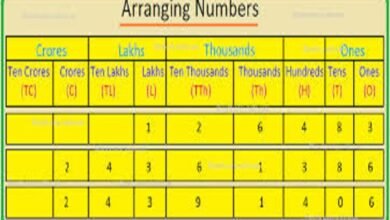Mastering Data Organization: Ascending Order Descending Order

Understanding the concepts of “ascending order descending order” is fundamental in data organization and analysis. These methods are crucial for structuring data efficiently, whether in computing, mathematics, or everyday scenarios. This blog post dives into their definitions, applications, and benefits across various fields.
What is Ascending Order?
Ascending order is a method of arranging items such that their values increase from the smallest to the largest. It is widely used in numerical data sorting, alphabetical arrangements, and other orderly sequences. When data is sorted in ascending order, it simplifies searches, comparisons, and analyses, making it easier to handle and interpret large datasets. This sorting method is fundamental in programming, where algorithms like bubble sort, merge sort, and quicksort utilize the concept to optimize data handling.
The Importance of Descending Order
Descending order is the arrangement of data whereby elements decrease from the largest to the smallest. It is essential in scenarios where priorities are assigned with higher values or when a reverse chronological order is required. Sorting data in descending order is particularly useful in financial analyses, competitive rankings, and managing records that benefit from a top-down perspective.
Comparing Ascending Order Descending Order
While both ascending order descending order serve to organize data, they are chosen based on the specific requirements of the task at hand. Ascending order is generally preferred when data needs to be viewed starting from the smallest or earliest; descending order is selected when the emphasis is on the largest or latest. Understanding when to use each can greatly affect the efficiency and clarity of data interpretation.
Applications in Database Management
In database management, sorting data in ascending or descending order is crucial for efficient query responses and data retrieval. SQL, for example, offers ORDER BY clauses that allow users to specify whether they want data returned in ascending order or descending order, thus enhancing user experience and system performance.
Ascending and Descending Order in Programming
Programming languages like Python, Java, and C++ provide built-in functions to sort arrays and lists in both ascending and descending order. These functions are vital for developing applications that require data sorting, such as customer records management, scheduling systems, and statistical computing.
The Role in Statistical Analysis
In statistical analysis, arranging data in ascending or descending order can help identify trends, outliers, and patterns. For example, sorting a data set in ascending order might reveal incremental growth, whereas descending order could highlight declines more prominently. These insights are pivotal in making informed decisions and strategic planning.
Visual Representation Through Charts and Graphs
Visualizing data through charts and graphs is more intuitive when data is organized, whether in ascending order or descending order. Bar charts, histograms, and line graphs all benefit from sorted data, as it provides a logical flow of information and makes differences and similarities more discernible.
Educational Implications
In educational settings, teaching the concepts of ascending and descending order starts early, as they are fundamental to understanding mathematical concepts and operations. These principles are not only applicable in math but also in teaching organizational skills and logical thinking.
Ascending Order and Descending Order in Everyday Life
From organizing books on a shelf to sorting emails in an inbox, the principles of ascending order descending order permeate everyday activities. They help maintain order, save time, and increase efficiency in routine tasks, making them essential organizational strategies in both personal and professional lives.
Challenges and Considerations
While sorting data in ascending order descending order is highly beneficial, it comes with challenges such as computational efficiency, especially with large datasets, and the complexity of sorting algorithms. Understanding these limitations is key to optimizing data management strategies effectively.
Conclusion
Ascending order and descending order are more than just data sorting methods; they are essential strategies that influence various aspects of business, technology, education, and daily life. Mastering their applications and limitations allows for better organization, clearer analysis, and more strategic decision-making across multiple domains.
FAQs
What is ascending order?
Ascending order is a data arrangement in sequential order from the smallest to the largest or from earliest to latest.
How does descending order differ from ascending order?
Descending order sorts data from the largest to the smallest, opposite to ascending order, which is from smallest to largest.
Why is sorting data important?
Sorting data helps in easy retrieval, efficient analyses, and the organization of data, making processes more streamlined and understandable.
Can you sort data in ascending and descending order in Excel?
Yes, Excel provides features to sort data both in ascending and descending order, which can be applied to numerical data, dates, and text.
What are some common algorithms that use ascending or descending order?
Common sorting algorithms include bubble sort, merge sort, and quicksort, which can be implemented to sort data in either ascending or descending order depending on the requirement.





